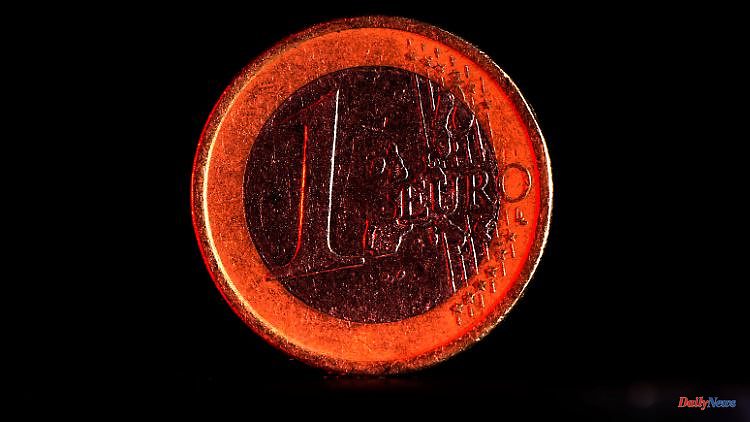With another key interest rate increase by the ECB by 0.5 to 3.0 percentage points, the prospects for savers have improved further. In return, however, loans are also becoming more expensive, which is particularly noticeable in real estate financing.
The European Central Bank (ECB) has again reacted to the persistently high inflation rates in the euro area and increased the key interest rate in the euro area by half a percentage point to 3.0 percent. And: The Governing Council of the ECB is holding out the prospect of further interest rate hikes. The next council meeting will take place on March 16th.
Savers in particular should be happy about the fifth interest rate hike in a row. Nevertheless, the measures are put into perspective when you consider that inflation rates in the euro zone and in Germany were 8.5 and 8.6 percent respectively in December last year. Which means that the interest rates that can be earned for savings are still very negative in real terms.
Regardless of this, one person's joy is another's pain, or it often happens to the same person, because many people are not only savers but also borrowers.
Various comparison portals have taken a critical look at what the increase in key interest rates means for consumers. The areas of construction financing, investments, current accounts and installment loans were considered.
Daily and fixed deposit accounts
The ECB decisions of July, September, October and December had already caused interest rates to rise on call money accounts, and a significant increase in interest rates was also noticeable for newly concluded fixed-term deposits. All comparison portals are currently assuming that the trend towards higher interest rates will continue and possibly accelerate over the course of the year. For a one-year fixed-term deposit with German deposit insurance, 2.70 percent interest can currently be obtained (Bank11). For money houses in the EU it is up to 3.109 percent (Signet Bank via interest pilot).
According to FMH-Finanzberatung, there are up to 3.395 percent or 3.433 percent (both Payray via Weltsparen) for terms of two to three years. Without intermediaries, Crédit Agricole offers 3.30 percent for three years. There is German deposit protection for this period at Bank11 in the amount of 3.20 percent. And if you can currently spare your money for 10 years, you get up to 3.50 percent interest in Germany (PBB Direct).
Fixed deposit accounts in comparison
In the current environment, savers can use the staircase strategy. In this case, the entire savings are not in a single fixed-term deposit account, but are divided into different accounts with different maturities. Flexibility is therefore important in the current environment, so savers should not put all their wealth in long-term investments.
According to FMH, new customer offers of up to 2.3 percent are already available for overnight money from a German deposit insurance (Bank11 – limited to six months).
However, not all savers are still benefiting from the turnaround in interest rates. While at the top of the market the rally for the highest interest rates is picking up speed, almost two-thirds of all banks are still not offering any interest at all on their call money accounts. This is the result of a current Verivox evaluation of 626 banks and savings banks. Especially in the regional sector, i.e. in the local savings banks and the cooperative Volksbanks and Raiffeisenbanks, the turnaround in interest rates has not yet come to fruition in many places. In both groups of institutions, the average call money rates are just above zero. Call money offers nationwide bring an average of 0.62 percent interest. Interest rates in this segment have increased more than tenfold since the first ECB rate hike.
Daily money accounts in comparison
installment loans
At the same time, as mentioned, interest rates on consumer loans are also rising. Because when fixed-term deposit interest rates rise, installment loans have always been expensive. Unfortunate from the consumer's point of view. It's also going up here, because the banks are using fixed-term deposits and overnight deposits to refinance consumer loans.
While the interest for such a loan with a term of 60 months was still around 3.70 percent in January 2022, it was already 5.95 percent at the end of 2022. Installment loans have become cheaper again in recent weeks. However, this is not a trend, but just a small, encouraging dent, the FMH states.
A comparison of the conditions is therefore more worthwhile than ever. Because the range of offers is very large. If you look closely, you will be able to find offers for less than six percent in the future, even if the average interest rate in spring is likely to be between 6.5 and 6.75 percent. For comparison: the average for the past 20 years is 6.53 percent.
Even before the interest rate hike in September, the Check24 portal observed a significantly larger range of interest rates. This means that banks are more selective about borrowing customers, especially when budgets are tight. Which makes a loan comparison even more important. For example here:
Installment loans in comparison
building interest
Real estate buyers in particular have benefited from fantastic conditions when financing their properties in recent years. Even if that drove up demand and - because of the limited supply - prices. But building interest rates have more than quadrupled since the beginning of 2022. According to FMH, the average interest rate for a five-year loan is currently 3.78 percent, for ten years customers pay 3.63 percent, 15 years fixed cost 3.81 percent and 20 years fixed there for 3.85 Percent.
The ECB decision only indirectly affects building interest rates. The most important indicator are the interest rates for ten-year Bunds. Because they largely determine the yields for Pfandbriefe, which in turn are used by banks to refinance real estate loans. But Check24 had already made a commitment in September last year and predicted that the average home loan would in any case increase in price by a few thousand euros by the end of this year within the term. In addition, banks are acting more restrictively when it comes to lending. In the case of current mortgage loans, on the other hand, nothing changes.
Anyone who is faced with the decision for a longer or shorter fixed interest rate must therefore consider how interest rates will develop. If you assume that interest rates will be significantly lower in five years than they are today, a short term is recommended. On the other hand, if one assumes that interest rates tend to move upwards, a long-term hedge of 20 years would make sense. Security costs money, but creates long-term certainty about one's own burden.
Building loan interest comparison
Interest on the checking account
If you are feeling a little tight, you often overdraw your account and use the overdraft facility to overcome the bottleneck. Which is usually not a good idea. Especially in times of rising interest rates. Apart from that, the overdraft interest will also rise due to the turnaround in interest rates, since the financial institutions are based on the ECB key interest rate. According to FMH, the current average interest rate on a credit line is currently 10.51 percent. The interest for the overdraft of the overdraft facility is therefore 11.93 percent. Apart from that, debtors should be aware that the overdraft facility for the checking account is usually the most expensive loan from the bank. You should only use it exceptionally and for a short time.
Checking Account Comparison












